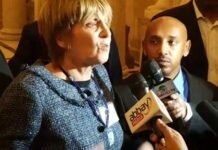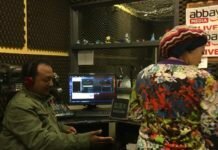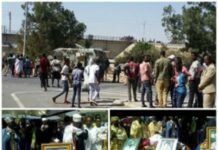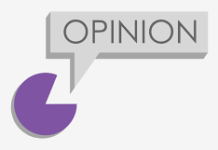Ethiopia is enmeshed in a deep political turmoil. The battle within the Ethiopian People’s Revolutionary Democratic Front (EPRDF), the party that has ruled the country with an iron fist for last 27 years continues unabated. EPRDF is a coalition made up of ethnic parties exclusively belonging to the three largest ethnic groups namely – the Oromo (Oromo People’s Democratic Organization, OPDO), the Amhara (the Amhara National Democratic Movement , ANDM), the Tigrayans (the Tigrayan People’s Liberation Front, TPLF) – and a fourth multi-ethnic party representing the Southern Ethiopia region (the Southern Ethiopian People’s Democratic Movement, SEPDM).
While the rift within the party was triggered by the Oromo and Amhara protests, the reasons that inspired the protests in the first place were multiple. For the Oromo protests, the Addis Ababa master plan was the immediate detonator. By the time the plan was frozen by the government it was already too late to quell the protests. As the protests prolonged, the reasons too stretched to demands for political reforms and at sometimes chants for regime change are also echoed among protesters. Then in Oromia and Amhara regions, regional authorities sided with the protesters marking the beginning of an open friction within the EPRDF coalition.
At the moment in Oromia region, protests against the central government are led by regional/local government officials (OPDO members), something unthinkable few years ago. In fact, it is now obvious that there is only symbolic central government in Ethiopia. The real centres of power are split between the OPDO, ANDM and the TPLF. The central government seems to have already lost whatsoever control or influence over these regions. Even at the federal level there seems to be no united federal government position but multiple sometimes even divergent positions depending on the ethnic group each minister hails from.
Despite the recent show of unity and acknowledgement of wrongdoing by the four leaders of the EPRDF coalition members, all parties are still engaged in alliance building and local militia build up (in the name of regional special force) in a typical pre-war preparation style. While the Oromo and the Amhara continue consolidating their alliance, the Tigrayans are cosying up with the Southerners and reaching out to non-EPRDF members.
Taken all these into account, there is a very real danger that if not managed well, the current crisis could indeed drive Ethiopia into state collapse or even a civil war.
The question therefore that many Ethiopians including the international community are grappling with at the moment is how to salvage Ethiopia from such a scenario. Two major propositions seem to dominate the debate among Ethiopians.
The first proposition is spearheaded by those who blame ethnic federalism for the current crisis. Hence, their proposal is to abolish ethnic federalism all together although it is not clear yet what they want to replace it with. Many would disagree with an hypothesis that depicts ethnic federalism as the mother of the current political quagmire. I disagree too. To the contrary, I would argue that it was the hypocritical implementation of federalism that is to be blamed for the current problems. To a larger extent, federalism for the last 27 years has remained only a slogan with very little political will to make it work. Apart from few symbolic elements such as cultural rights and use of local languages, the core issue of right to self-determination has not been materialized. As per the constitution, ethnic federalism was principally introduced to end inter-ethnic subjugation and therefore safeguard equality and right to self-determination for all Ethiopians – both as groups and individuals. Today the problem is not the realization of this goal, but as all know, it is the continued supremacy of TPLF over the entire country under the disguise of the EPRDF. This is what needs to change; otherwise we shall be throwing the baby out with bathwater.
This brings me to the second proposition that pressed me to write this article. That is the need for political reform and peaceful transition toward more democratic Ethiopia. All stakeholders, EPRDF included, seem to agree with this proposition. In fact, the late Prime Minister Meles, the architect of Ethnic federalism, too once claimed that democracy is an existential necessity for Ethiopia. I fully agree. The question however is whether all are talking about the same kind of political reform and democratic Ethiopia. It seems not.
To keep the discussion around the current crisis, the recent alliance between the Amhara (ANDM) and the Oromo (OPDO) against the TPLF seems to have spurred a sense of euphoria even among the ardent opponents of the EPRDF. The logic is simply that if the two biggest ethnic groups come together then TPLF will loss control and eventually power. What I hear and read from both Amhara and Oromo elites (both pro and against EPRDF) so far is more of their common desire to replace TPLF than clear articulation of the kind of political reform Ethiopia needs. Prominent Oromo and Amhara oppositions are even now supporting OPDO and its leader Lemma Megersa for his bold stance against the TPLF. I assume they would support the EPRDF too if Lemma or someone of his type from ANDM would take its leadership. I have no issue with the support part and in fact appreciate the dialogue between the ANDM & OPDO. But I have a big problem when this is equated with political reform and transition towards a more democratic Ethiopia.
First, EPRDF in itself is not representative of all Ethiopians. Yes, it represents the majority ethnic groups from the highland Ethiopia. But if population size is the criterion, the Somalis – the third largest ethnic group according to latest national census results, would have been incorporated too by now into the EPRDF. I conducted a research on why the four lowland regions (Afar, Beneshangul-Gumuz, Gambella & Somali) have not been part of the EPRDF. I found no credible answer than the carryover of historical marginalization and discrimination against lowlanders under the successive Ethiopian regimes. This is corroborated by Prof. Clapham, who argued that given the Marxist roots of the TPLF, the political segregation between the highland and lowland could have been reinforced by the Marxist-Leninist theory of political segregation between sedentary agrarians (in this case the highlanders) and pastoralists, hunters and gatherers (in this case the lowlanders).
The origins of this peculiar distinction (EPRDF and non-EPRDF membership) lie, I believe, in Marxist-Leninist theory, in which the late Meles Zenawi was deeply steeped. This is capable of finding a place for a settled agricultural peasantry, as the productive force in the earliest class structure – feudalism – from which it projected a progression first to capitalism and then to socialism, but which has had enormous difficulty in conceptualising pastoralism as anything but a form of ‘primitive communism’ that lies outside the development of social classes, and therefore could not be incorporated into a vanguard party of the kind that Meles conceived the EPRDF to be (Clapham, 2014, Ethiopia: Federalism and the Developmental State).
The late Prime Minister Meles Zenawi had alluded to this argument – pastoralism as primitive lifestyle that needs to change – several times in his defence of his villagization and large-scale agricultural investments policies in the lowland regions. Not all lowlanders are however pastoralists, so the whole theory was premised on a faulty hypothesis. Nevertheless, for the last 27 years therefore, there have been two tiers of federalism in Ethiopia. One for the four highland regions of Ethiopia where at least in theory the four regions sit around the table and make decisions as equal partners despite the unwritten TPLF supremacy, and another for the four lowland regions where both in theory and practice they remained totally excluded from even sitting around the decision table. Despite their full recognition as regional states under the federal constitution with the same rights as other highland regions, the four lowland regions have been only expected to implement what the EPRDF tells them through the TPLF cadres stationed in each region. This is the extent to which the concept of federalism has been misused and abused for the last 27 years.
This discrimination does not only remain at the institutional level, it also cascades to individual citizens from these lowland regions. It means citizens from these regions could not access benefits reserved for EPRDF members. Even in universities where students are organized only along the four EPRDF members, students from lowland regions have to align themselves as subordinates to other students from one of the EPRDF members in order to access some benefits.
This flagrant political segregation is simply unacceptable in the 21st century. It violates the Ethiopian constitution and runs directly counter to the spirit of federalism that was introduced to end historical disparities (political, economic and social) among nationalities. Hence, discussion on political reform in Ethiopia should begin with first of all dismantling all types of discriminatory policies and practices and create space for all Ethiopians both as groups and individuals to come together and discuss their common future as equal partners around the table irrespective of their size, geographical origin, ethnic or historical backgrounds. The future of Ethiopia should concern all Ethiopians. It should not be left to some first class citizens to shape it while others remain as spectators. Equality of all should be the bedrock for true democratic Ethiopia.
My second problem with the current debate around political reform and democratic Ethiopia is the fact that it still very much remains as an elitist agenda. The absence of meaningful civil society in the country and lack of political space might have contributed to the problem. But even among the diaspora, the discussion is still pretty much driven by the usual suspects – ethnic based political parties and organizations, ethnic centred media outlets, ethnic biased professors and religious leaders and so on. One would think the current crisis could have stimulated broader discussion across ethnic lines and any other political barriers. I have not seen this happening yet at a scale commensurate to the current crisis. The Amhara-Oromo friendship, though a good start, it is still more of a political alliance against the TPLF than genuine attempt towards true democracy in Ethiopia.
Hence, unless the debate transcends ghetto politics, we could not talk about genuine political reform and democratic Ethiopia, because true democratic Ethiopia could only be an outcome of convergence of divergent perspectives and interests of all Ethiopians. In fact this goes to the very heart of the problem of the current Ethiopian state. From its inception, the present Ethiopian state was born out of colonization of formerly independent kingdoms by the northern Abyssinian kingdom. The Derg that brought to an end the imperial rule in Ethiopia did not either consult Ethiopians on what kind of government they want but instead imposed communism through the barrel of a gun. The TPLF/EPRDF, despite some cosmetic consultations, they too followed suite with their ethnic federalism. In short, despite regime changes in Ethiopia, the underlying understanding and practice of governance has not changed – that is governance through absolute power and control. If genuine democratic process is to be launched, it is this underlying political culture that needs to change, not so much a question of what political system do we need. Defining a democratic Ethiopia cannot be a onetime project but has to be a process of negotiating various interests in an open and transparent political environment. For this to happen there has to be an enabling political and civil society space where citizens as groups or individuals could freely voice their concerns, agree, disagree or agree-to-disagree on their common future.
What Ethiopia needs at the moment therefore, in my view, is not just the change of faces on same old seat of oppression and subjugation, but a fundamental shift in our understanding and culture of governance towards genuine participation and tolerance of divergent views based on true equality of all citizens and groups. This could set us on the right track of genuine political reform and democratic Ethiopia that we all wish the current crisis to lead us to. However, the worse the current crisis could produce is if it ends up only shifting the face of dominion from the current minority Tigrayan (TPLF) supremacy, to majority Amhara (ANDM)-Oromo (OPDO) tyranny – this would be tantamount to jumping out of the frying pan into the fire for minorities.

























![Deaf Ear! Blind Eye! —Why Ethiopia’s Opposition must seize a golden opportunity for fundamental change–[ by Aklog Birara (Dr.)]](/wp-content/uploads/2017/12/aklog-218x150.jpg.pagespeed.ce.29_Zpow0pj.jpg)

















